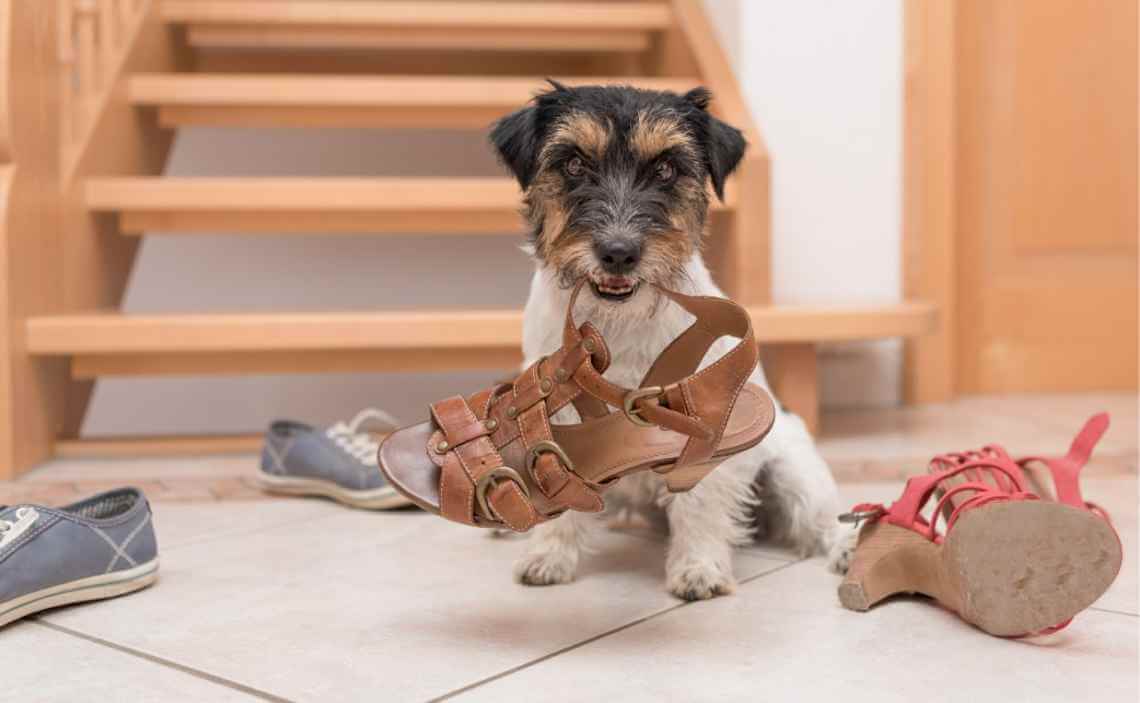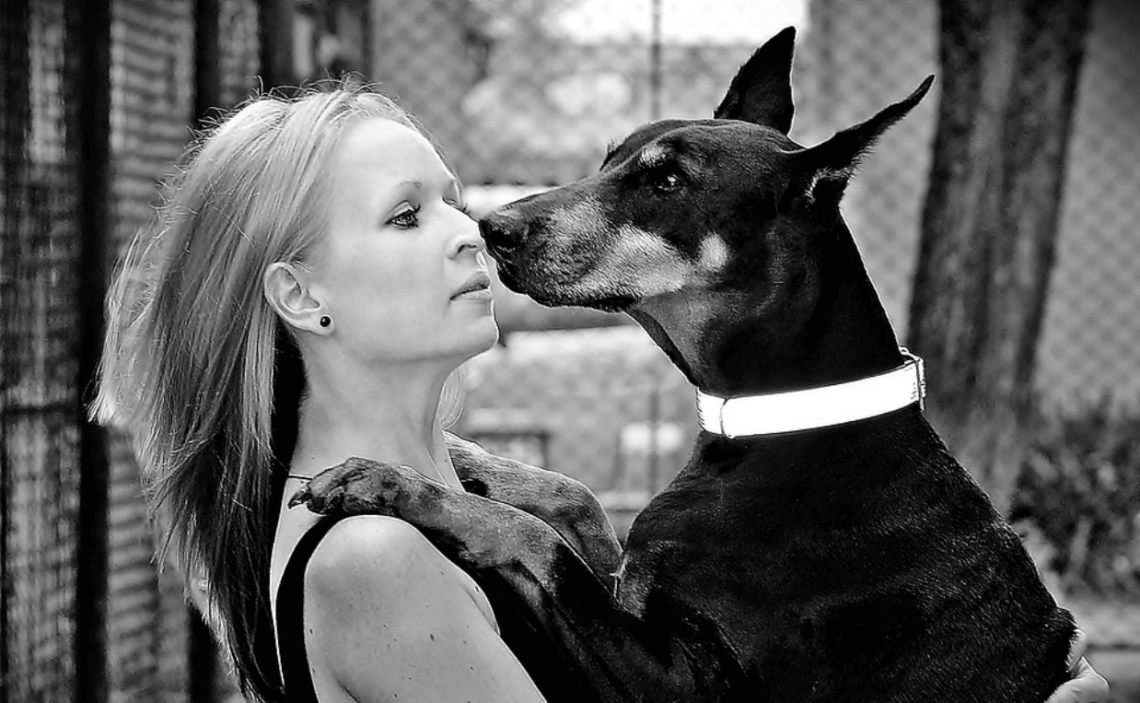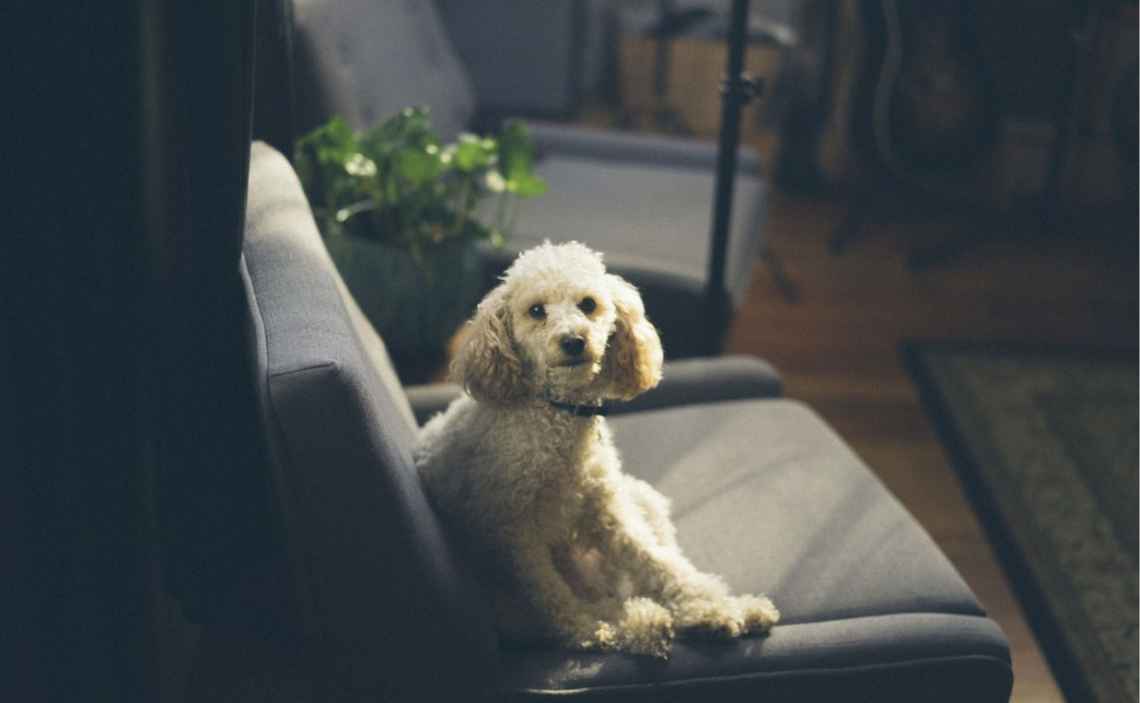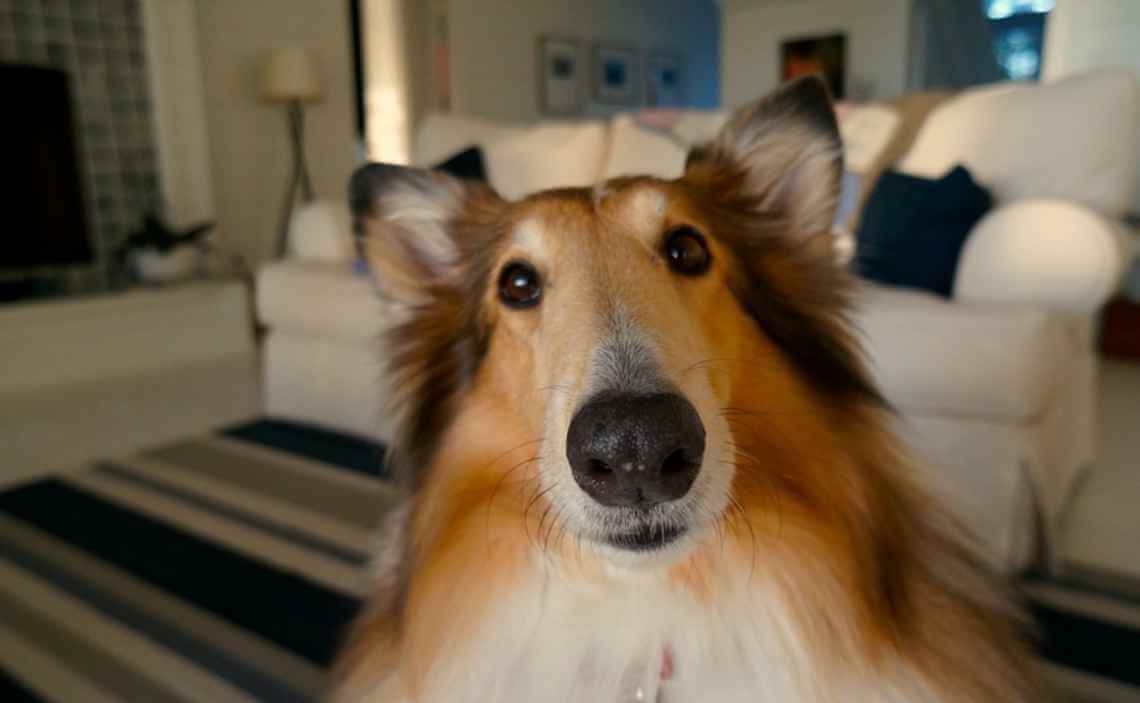
Dogs, like people, are unique individuals, with their own personalities, quirks and behaviors. Some of these eccentricities in dogs can be linked to their breed or breed mix. For example, some hunting dogs were bred to be vocal, so it’s not surprising they are going to be predisposed to howl loudly.
However, certain behaviors we consider to be a problem are common among most dogs. Thankfully, there are positive ways we can train dogs to minimize these behaviors.
Here are five issues dog owners commonly complain about, and ways to counteract the problem behavior.

-
Jumping Up
Dogs greet each other by touching noses; since our nose is not at their level, they will naturally jump up to reach our face. Allowing your dog to jump up when greeting you or others is not a good practice. For one, it is annoying to the person being jumped on. And, it can be dangerous. A larger dog can easily knock someone over, especially if they are small or fragile.
There are two aspects to teaching your dog to stop jumping up. One is managing their behavior and two is training your dog to not jump up.
-
Manage your dog
Prevent your dog from jumping up on people while teaching them the proper behavior. You can put them in their crate, confine them in a different room or restrain your dog on a leash.
-
Training your dog not to jump up on people
Teach your dog he or she does not receive attention for jumping up on you or anyone else. To do this, you need to change their behavior. For example, if you teach your dog to sit when he or she is greeting someone, they won’t be jumping up, because they can’t sit and jump up at the same time.
With any kind of training, it is important that you are consistent all the time. Everyone in the family needs to follow the same protocol, which can go something like this:
- Enlist the help of someone your dog knows and likes. As the greeter approaches give your dog the “sit” command.
- If your dog stands up, the greeter should immediately turn and walk away.
- Ask your dog to “sit” again.
- Keep repeating these steps over until your dog learns to remain seated as the greeter approaches.
- If your dog remains seated, ask the greeter to give your dog a treat as a reward.
- If your dog jumps up on you when you arrive home, turn and go back out the door until your dog learns he or she will not receive your attention until they stay “down” with all four feet on the floor.

-
Excessive Barking
Most dogs bark, howl and whine to some degree. When your dog barks excessively, it is considered a problem. As a matter of fact, most cities (including Colorado Springs) have noisy pet ordinances that state it is unlawful to allow your animal to persist in loud barking, howling, baying, yelping, whining or other utterances that disturb the peace and quiet of the neighborhood. If the noise continues after an initial warning, a citation may be issued.
A lot is at stake when it comes to correcting barking.
To begin with, it is helpful to recognize why your dog is barking excessively.
Is your dog:
- Warning or alerting you that something isn’t right?
- Being playful or exhibiting excitement?
- Seeking attention?
- Bored?
- Responding to other dogs?
There are a couple of things to keep in mind when teaching your dog to stop barking excessively.
- Don’t yell at your dog to be quiet. To him, it just sounds like you are joining in on the barking.
- Keep your training sessions positive and upbeat
- Be consistent so you don’t confuse your dog. You can’t let your dog bark excessively sometimes and then get away with inappropriate barking other times.
Training Techniques for Excessive Barking
Here are some training techniques you can use to teach your dog to stop barking excessively.
-
Remove the motivation for the barking
If you can, reduce the opportunity your dog has to bark. If he tends to bark at people just passing by, don’t let your dog view them by putting them in another room or pulling a curtain closed. Bring him into the house if he’s barking too much when outside in the yard. Never leave your dog unsupervised for long periods of time.
-
Ignore the barking if you can
This technique works in the house or another environment where the barking won’t bother other people. The goal is to give your dog a treat when he or she isn’t barking, so they learn they’ll get your attention and a reward if they don’t bark. To do this, you have to wait it out until they stop. Start by rewarding your dog when he or she is quiet for just a few seconds. Over time, extend the amount of time he or she needs to be quiet to gain your attention and reward.
-
Teach your dog the “quiet” command
First, you have to teach your dog the “speak” command. Once your dog can reliably “speak” on command, you can teach her the “quiet” command. Start by giving the “speak” command, and then give the “quiet” command. Praise her for being “quiet”. Keep working with her until she understands the “quiet” command.
Once she understands “quiet”, you can start to work with her in distracting situations, such as when a someone rings the doorbell. If you’re consistent, she will eventually understand “quiet” even in a stressful situation.
-
Teach your dog a contradictory command
You can use this technique for a variety of unacceptable behaviors. The concept is to teach your dog a command that is incompatible with the annoying behavior. For example, you can teach your dog “place” and point to his bed or mat. Once he understands this command, you can increase the difficulty by rewarding him if he stays in his place despite stimulating circumstances, such as someone ringing the doorbell.
-
Keep your dog tired
Make sure your dog is receiving sufficient physical and mental exercise every day. A tired dog is a dog that is less likely to bark from boredom or frustration. Depending on your dog’s breed, age and health, he or she may need several outings a day to be tired enough to refrain from excessive barking.
Have a high-energy dog that needs more than one or two outings a day? Consider bringing him or her to daycare for lots of fun, stimulating exercise.

-
Begging for Food
Begging is a common dog behavior. It can be annoying for your dog to hound you for food every time you sit down to eat.
Here are a few things you can do to teach your dog to stop begging.
-
Don’t reward the behavior
While it can be difficult to not give in, once you have given in it will be even that much harder to put an end to the behavior.
When you’re trying to train your dog to stop begging, it helps to remember why it’s so important. Feeding your dog human food from your plate can lead to overeating and obesity, which can lead to diabetes and other health issues for your dog.
-
Use the “place” command
Teach your dog to go to her “place” by pointing to the spot you’ve picked out and rewarding her when she does follow the command. Practice this command and be consistent every time you sit down to eat. If she moves away from her place, move her to a different room (or her crate) until she understands she needs to stay in her place until you’re finished eating.
-
Keep your dog occupied
Reserve a special toy, especially something he can chew on, just for meal times. This will give him something to do while you’re eating.
-
Be consistent
The key to teaching your dog to stop begging is to be consistent. Make a rule in your house that no one feeds the dog other than her own food and treats. When you have visitors, let them know as well.

-
Getting Up on Furniture
-
Teach your dog the “off” command
Anytime your dog starts to get up on the furniture, tell him to get “off”. Reward him when he stays off. Stay consistent and eventually he will understand and follow your command. You may have to gently help him stay down from the furniture until he understands what you want him to do. NEVER push, throw, shove or hit your dog.
-
Use a “positive interrupter” to get her off the furniture
A positive interrupter is a noise that distracts your dog, like snapping your fingers or using a clicker. When your dog jumps up on the couch, you make the noise, and then when she gets down, you make the noise again and give her a reward.
-
Don’t allow him up in the first place
You can place a chair on the couch when you aren’t sitting on it. You can also put upside-down laundry baskets or wrong-side plastic floor protectors (cut them the length of the furniture). There are products on the market called “couch defenders” that look like a tunnel that you can place on your furniture. You can then store them conveniently under or behind the furniture.
-
Manage your dog when you’re not home
Don’t let your dog into the room with the furniture you want to protect by putting him or her in a crate, blocking off the doorway or shutting the door.
-
Avoid scare tactics
Don’t make super loud noises or use a static mat on the couch. Those tactics might work, but they don’t really teach your dog what you want him or her to do. It will more than likely just cause them to be scared of the couch. Training your dog is about strengthening your bond with him or her, not scaring them!

-
Digging
Does your yard look like a minefield with holes everywhere?
If so, the first thing you need to know is that your dog isn’t digging with the intent of destroying your landscaping.
There are many reasons your dog digs holes in your yard. Some of the most common include:
- Your dog is left alone for long periods of time without a companion and is lonely
- The environment is relatively barren – no playmates or toys
- They are a puppy or adolescent and don’t have another outlet for their energy
- They are a digging breed
- They are active and needs something to do to be happy
- They’ve recently seen you gardening or digging in the yard
- They are trying to “dig for prey”
- They are digging for comfort and protection
- Your dog is seeking attention, even negative attention
- Your dog is trying to escape the yard
Here are some solutions you might consider:
- Make sure your dog has plenty of things to do. Play with him or her with frisbees, balls and other toys as often as possible.
- Walk your dog at least twice a day. Lack of exercise is a leading cause of problem behaviors.
- Teach your dog a few commands and practice them with her every day.
- Attend a training class and practice his lessons with him daily
- Keep interesting toys in the yard for her to play with when you’re not out with her. Rotate toys to keep things interesting. (Click here to learn more about project toys to help combat boredom.)
- Make sure your dog has adequate protection from the elements when out in the yard.
- Make sure your yard is inescapable and place rocks along the fence line
- Set aside an area as a “digging zone.” Cover the digging zone with loose soil or sand. Bury safe items (like dog toys) in the digging zone for them to discover. Reward your dog when he uses the digging zone. Make unacceptable areas less attractive (at least temporarily) by covering them with chicken wire or rocks to discourage digging.
When it comes to bad behaviors, it’s important to remember that your dog doesn’t have a sense of morality. He or she is just doing what comes naturally – and what works for them.
When your dog starts to exhibit a problem behavior, try to work on correcting it the right way. The longer you let the behavior persist, the harder it will be to correct it. Some problem behaviors become so ingrained that it’s almost impossible for most owners to teach their dog a different behavior.

If needed, don’t hesitate to seek the help of a professional trainer. Help your best friend with all the resources he or she needs to be successful. By securing the help of a trained professional, your bond with your dog will be strengthened, and you will be rewarded with his or her love and trust.
What is the least favorite behavior your dog exhibits? What corrections have you tried to fix it? We’d love to hear your experience with your dog in the comments below.














Leave a Reply